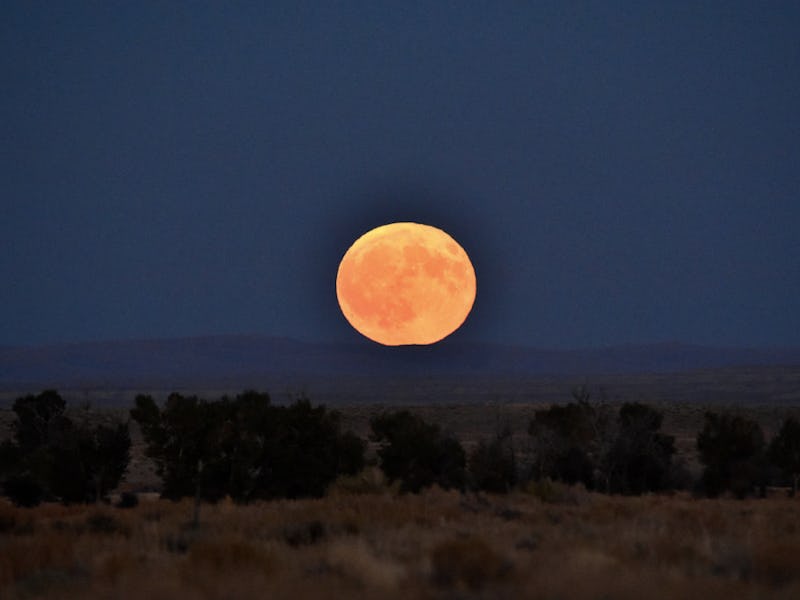Spring Equinox: There's a "Super Worm Moon" Coming Tonight
“The history of the ‘supermoon’ is not of astronomy."

On Wednesday, March 20, the Super Worm Moon will creep over the horizon at 5:58 P.M. Eastern. This celestial event lines up with the Vernal Equinox, and it also marks the last super moon of 2019. The Vernal Equinox — also known as the Spring Equinox — is the day when hours of daylight have finally lengthened enough to equal the hours of nighttime in a day, marking the end of winter in the northern hemisphere. Similarly, the Worm Moon marks the beginning of spring, the time of year when the frozen ground begins to soften, the roots of plants begin to once again push through the dirt, and birds begin foraging for worms.
These two events haven’t fallen on the same day since 1981, reports The Old Farmers’ Almanac, meaning that people are talking about the moon way more than they usually do. The name, Super Worm Moon, makes Wednesday’s phenomenon sound super cool, but we’re here to briefly break down what each part actually means so you can Well, actually with the best of them.
What Does Worm Moon Mean?
The name “Worm Moon” was used by Native Americans before the arrival of European colonizers. Various tribes had their own names for the full moon that marks the end of winter, including the Full Sap Moon, for the time of year when trees can be tapped for syrup, and Crust Moon, for the snow thawing during the day and re-freezing to form a crust overnight. All these names shared the quality of describing the natural phenomena that mark the end of winter and beginning of spring. In addition to describing the night of the full moon, the name also describes the month whose beginning it marks.
When European Christian colonizers arrived, the name Lenten Moon took hold since the last full moon of winter falls during the fasting period of lent, but the Native American names have stuck, perhaps in part because The Old Farmers’ Almanac insists on using them.
What Is a Super Moon?
The other half of the Super Worm Moon is the “Super” bit. A super moon is less rare than a Worm Moon, and while it has a scientific explanation, it’s arguably less scientific.
A super moon occurs when the moon is closer to Earth, a point in its orbit called its perigee. At this point, the moon will appear about 15 percent larger than it does during its apogee — the farthest point away from the Earth. It’s not a huge difference, but it’s a noticeable one, especially when the moon is down near the horizon.
The name “super moon,” though, has a decidedly unscientific history.
“The history of the ‘supermoon’ is not of astronomy,” Noah Petro, a research scientist at NASA’s Goddard Space Flight Center, told Wired. “The first person to define a supermoon was an astrologer, and of course that gives us heartburn.”
The astrologer in question, named Richard Nolle, argues that super moons can be linked to extreme weather events and even natural disasters like earthquakes, volcanic eruptions, and tsunamis. He explains the whole thing in a 2011 blog post that is extremely hard to get all the way through. Suffice it to say, there’s no scientific corroboration of Nolle’s hypothesis.
So yeah, the super moon is a cool phenomenon, but its origins are sketchy at best. But don’t let that stop you from stepping outside into the chilly spring air and catching a glimpse of the Super Worm Moon.